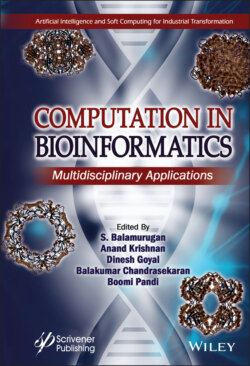Читать книгу Computation in BioInformatics - Группа авторов - Страница 20
1.2.6 QSAR (Quantitative Structure-Activity Relationship)
ОглавлениеIt is a statistical approach which attempts to correlate relationships between physical and chemical properties of molecules to their biological activities. QSAR predicts the molecular properties from their structure without any need to perform the experiment using in vitro or in vivo. This method saves time and resources [39]. Descriptors which are commonly used are number of rotatable bonds LogP and molecular weight (MW). This approach is used in optimizing lead which is the most important step of discovering drugs. The two techniques in 3D QSAR developed for LBDD are comparative molecular field analysis (CoMFA) and Comparative molecular similarity indices analysis (CoMSIA). Based on the data dimensions many QSAR approaches range from 1D QSAR to 6D QSAR.
a) CoMFA (Comparative Molecular Field Analysis)
It is categorized as 3D QSAR computational technique in which incorporation of experimental activities (log units of KI or IC 50) and the 3D structures of the molecules are done in the study. For this study, a set of derivatives of bioactive compounds having different substitutions is first selected. All of these compounds are then distributed into 30% test set and 70% training set. For QSAR performance, several softwares are available. An important aspect in CoMFA analysis is that it requires a common substructure with good alignment having the same conformation in all molecules.
b) CoMSIA (Comparative Molecular Similarity Indices Analysis)
It is a more advanced method of CoMFA, having fewer limitations. In this approach, SEAL similarity method is used as descriptors. Some of the descriptors used in this method are steric, electrostatic, hydrophobic, and hydrogen bonding. In the ligand binding areas, the unfavored region or the favored regions are indicated by generated contours. Sybyl-X 2.0 and E-Dragon are the software used for QSAR studies.
OCHEM: It is a web-based platform which aims to automate and simplify the typical steps that are required for QSAR modeling. It performs all the steps of a typical modeling workflow and provides facilities to use these data in the modeling process. It can be accessed at https://ochem.eu/home/show.do.
Discovery Studio: This software helps in analyzing the molecular structures/sequences and modeling it. It provides tools for performing analysis of basic data including functionality for editing and viewing data. It is a free viewer which can be used to open data generated by other softwares in the Discovery Studio. It can be downloaded from https://www.3dsbiovia.com/products/collaborative-science/bio-via-discovery-studio/visualization-download.php.
